40 Metal Working, i.e., Contouring
Metal Working Tips
- Note the location of the joint center. Never contour the joint center.
- Contour sequentially.
- Think about the curves ahead; Avoid going backwards
- Consider work hardening (cold working)
- Consider the radius of the curve.
- This indicates the placement of the irons
- Consider the plane of the radius of the curve.
- This indicates the orientation of the irons, specifically their perpendicular alignment to the metal.
- Be aware of the marks and stress concentrations that may be created during fabrication.
- Punch before drilling and set rivets before drilling 2nd hole. When drilling stainless steel, use lowest drill press speed and use oil.
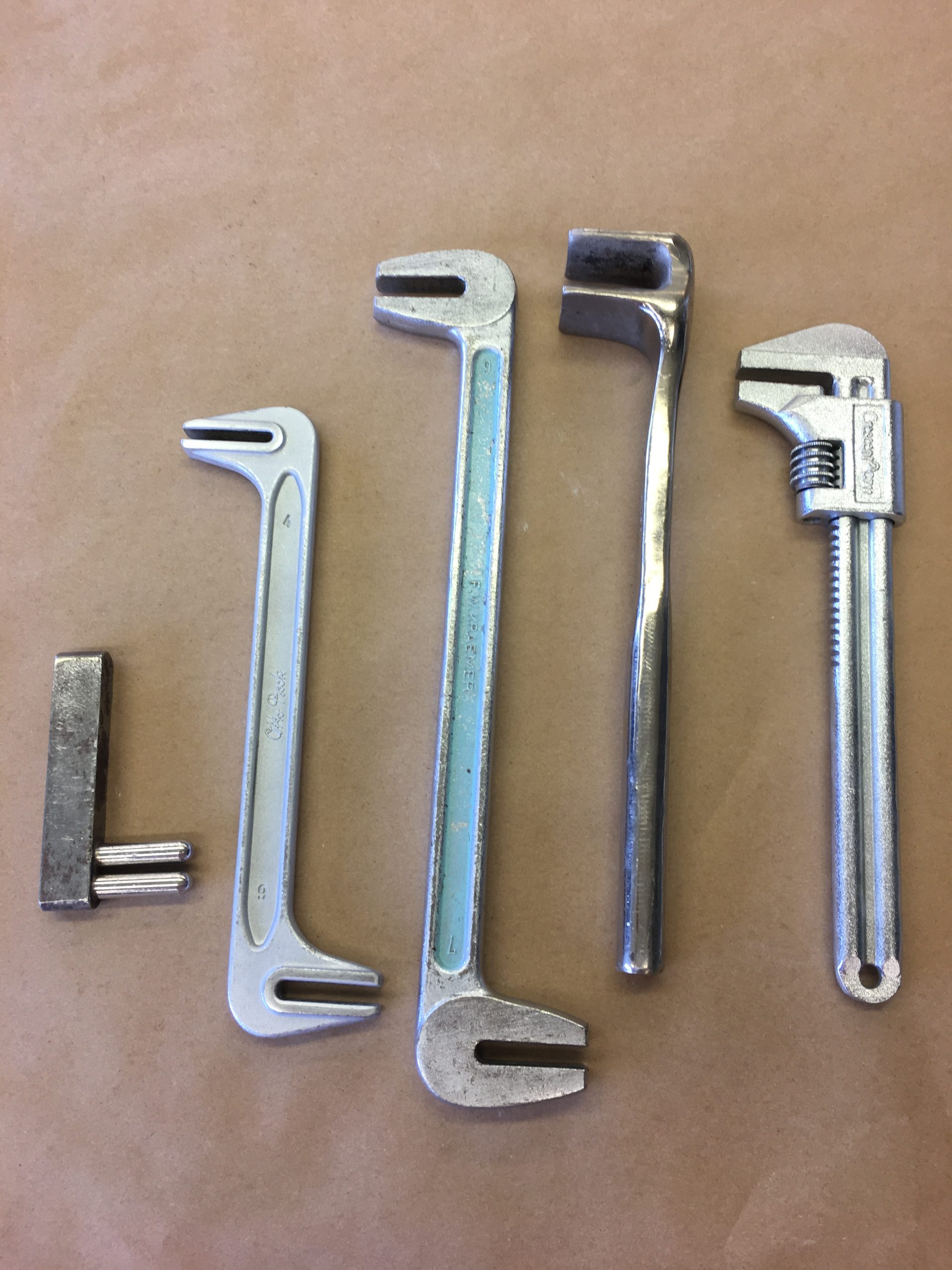
Tools
- Bending iron have two ends with different opening widths. Use the end with the narrowest opening that fits your piece of metal.
- Grease pencil
- Flapper wheel
Step 1
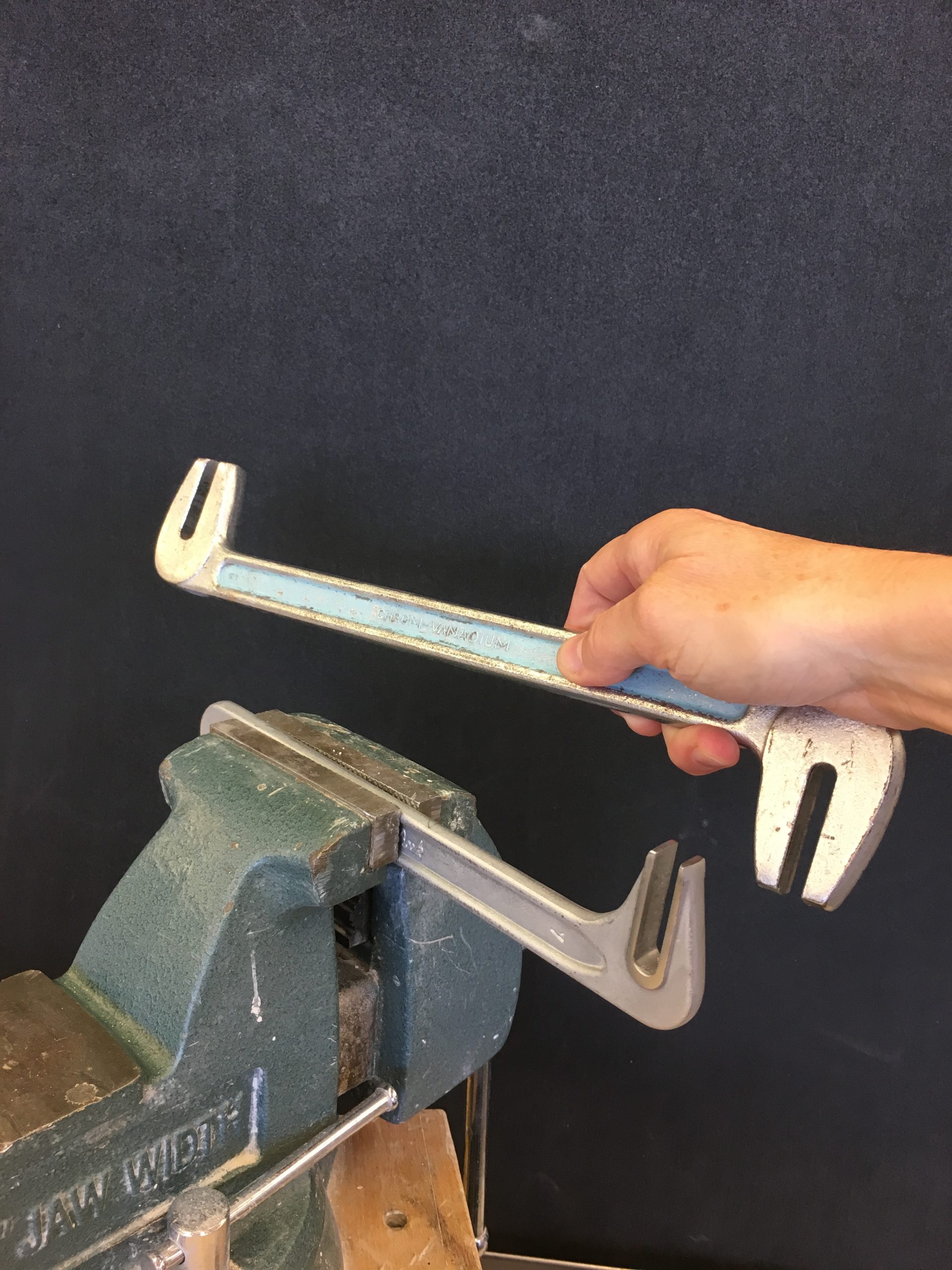
Place the bending iron or for in the vise with the open end up, permitting space to work in space. If a rounded-shaft bending iron is used, vise should clamp the opposite open end to prevent turning or pivoting.
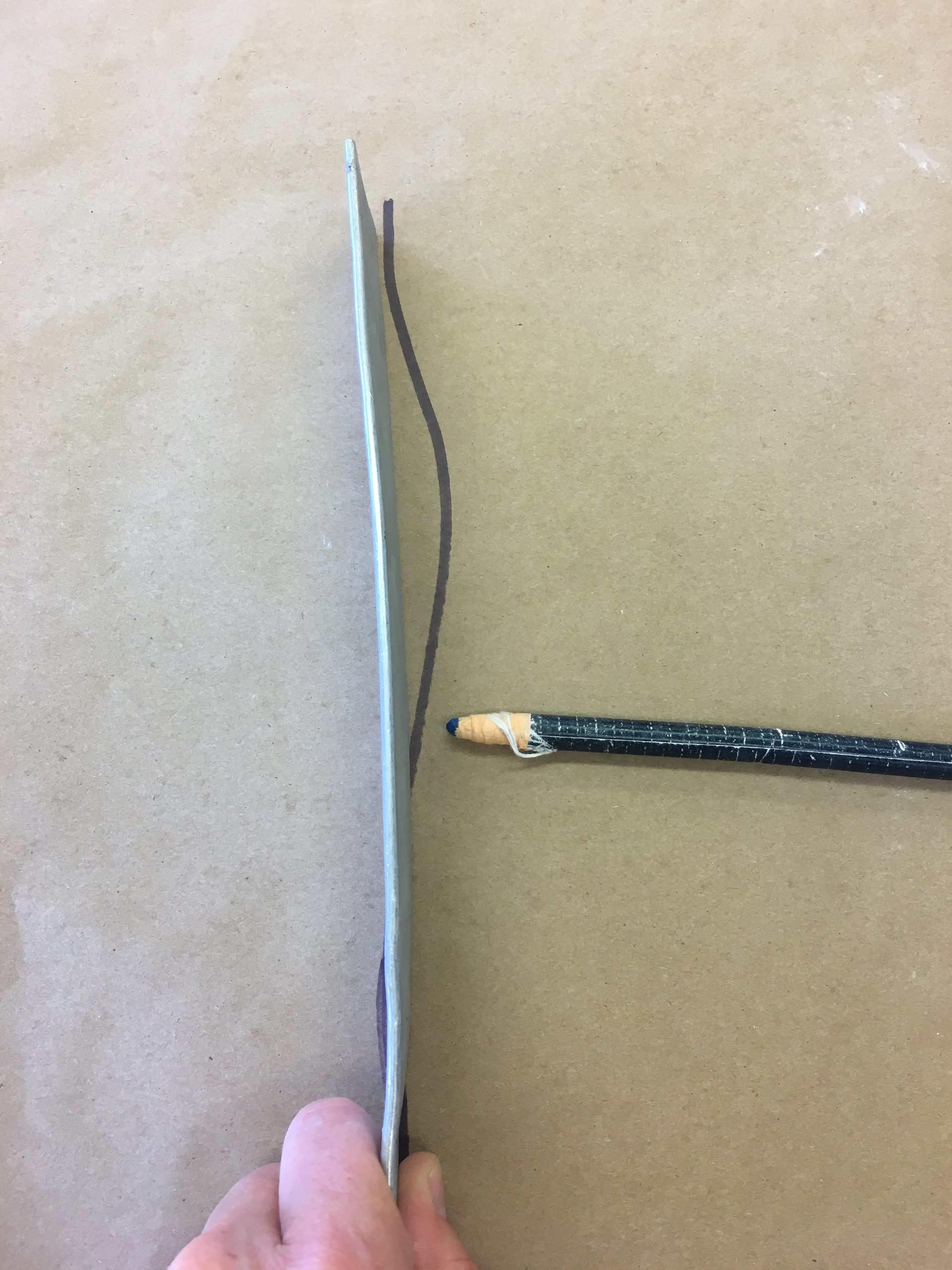
Step 2
Place the bar over the tracing, matching the end of the bar to the tracing line end. Mark the location where the first divergent line curves away from the metal with a grease pencil.
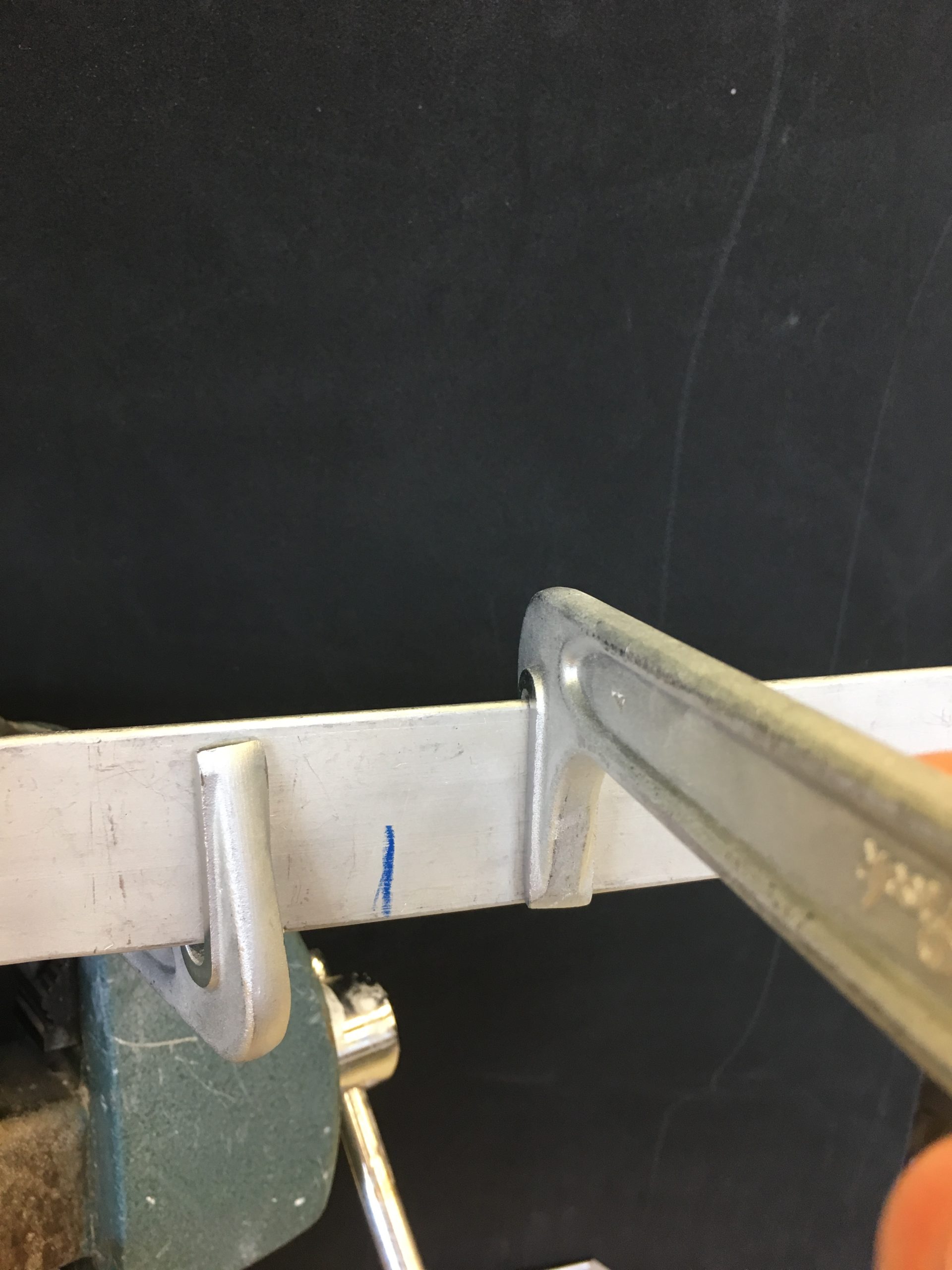
Step 3
Place the metal in then bending iron with prongs closely matching the grease pencil mark. Place the second bending iron on the other side of the grease pencil mark. The grease pencil mark should lie between the two irons.
Note:
- The metal will bend BETWEEN the prongs of the bending irons.
- AVOID contouring on a hole (the metal is likely to fail due to the high stress concentration).
- Avoid placing the bending irons too close together.
Step 4
Apply force to the second bending iron in the direction you want the metal to bend.
Get a sense of how much force it takes to bend the meal.
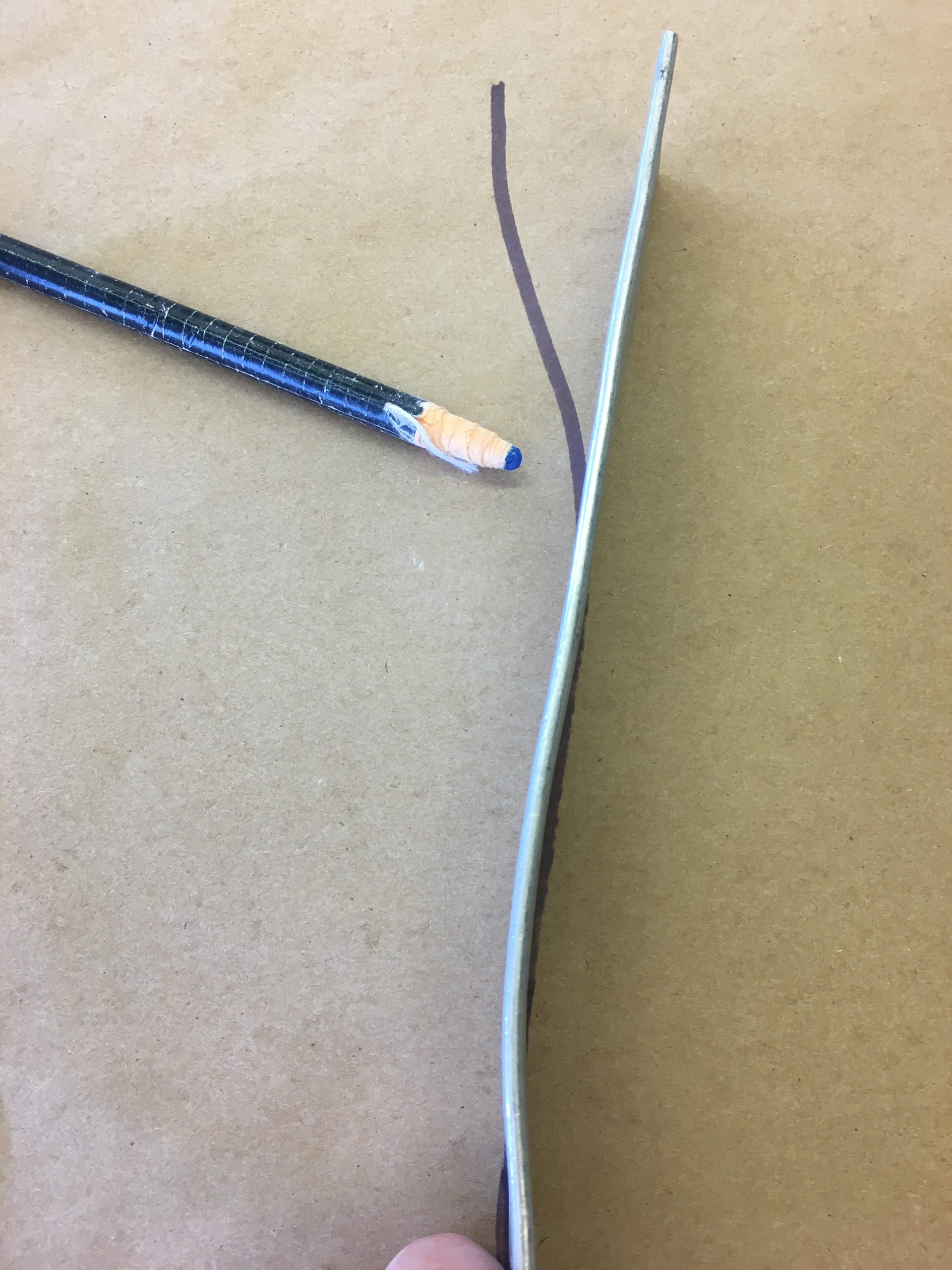
Step 5
Match the metal to the tracing again. Look for areas where the metal is divergent from the tracing.
Increase or decrease the bend to conform to the tracing.
Step 6
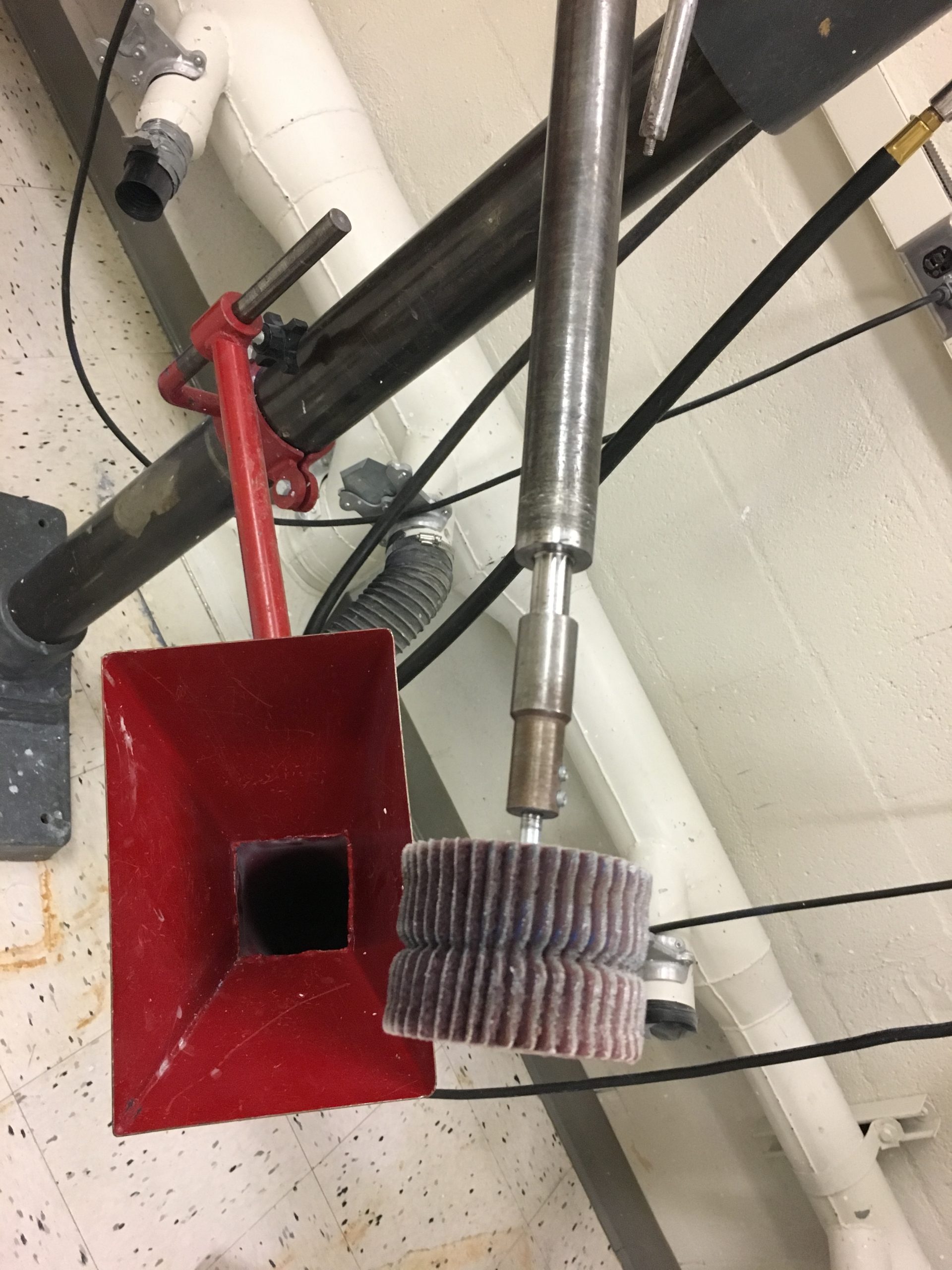
Use the flapper wheel to sand out nicks and scored areas so bar is smooth and free of marks.
Critique
- Each radius should match exactly.
- Metal is free of scratches and nicks
Performance Checklist
Contouring Metal
- Name tools: bending irons, bench vice, cast saw, hacksaw, hand saw, jig saw, band saw, adjustable blade, hand shears.
- Each radius should matches the tracing.
- Metal is free of scratches and nicks.
in metallurgy, this process increases the hardness (and brittleness) of metal. It is induced, deliberately or accidentally, by hammering, rolling, drawing, or other physical processes.
